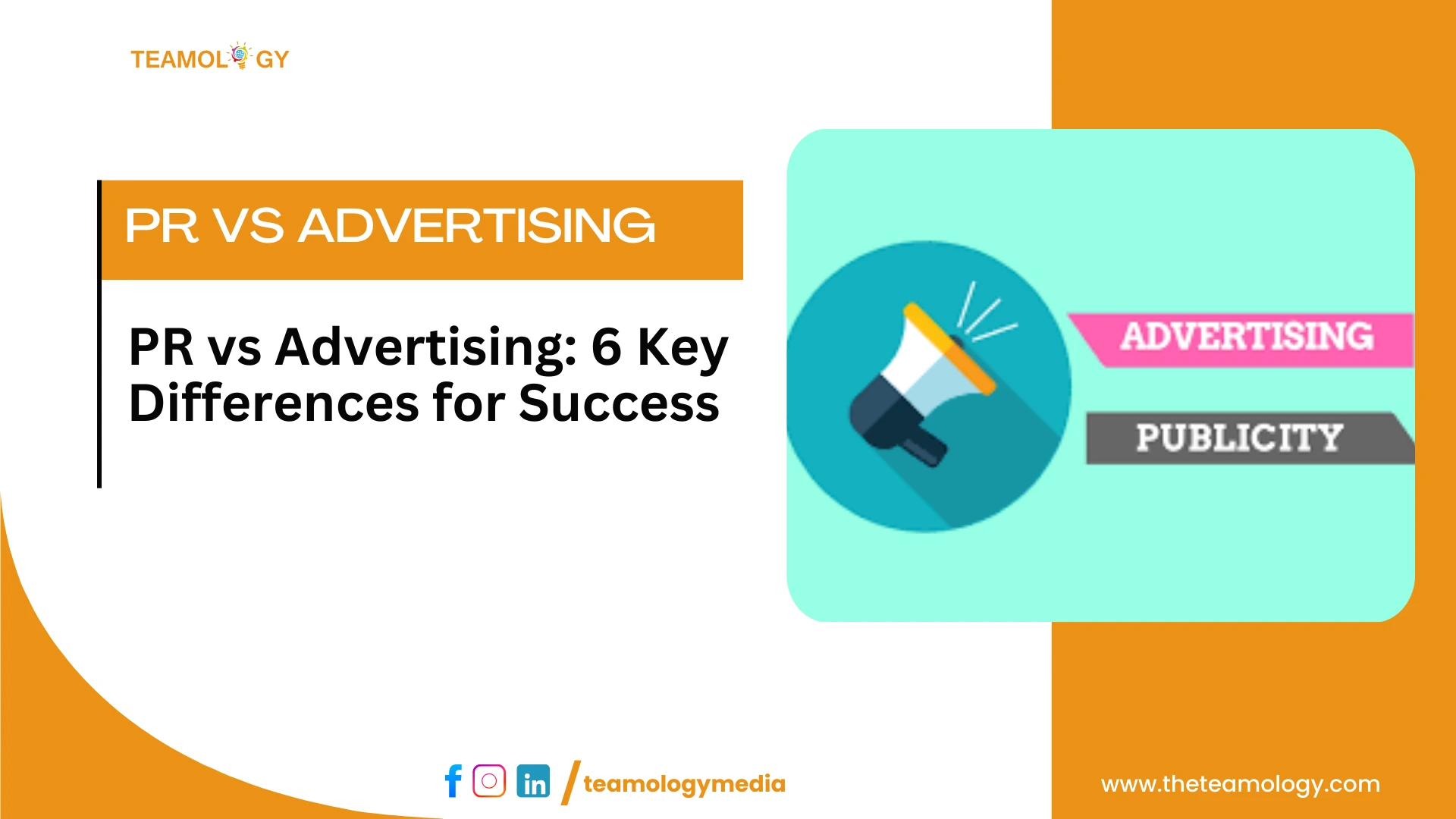Do you see PR vs advertising from the same angle? If you do, you are wrong! Many believe that PR and advertising are the same. In reality, they have distinct goals and approaches. Understanding the Difference between PR and advertising is crucial for any marketer or business owner.
Before working for a PR agency, I too had a misconception. I used to think PR and advertising were synonymous. Now the myth is busted.
If you want to understand the subtle differences between these two marketing tools, continue reading this blog. It also conveys the two terms and how they can work together to achieve a holistic marketing goal.
Definition of Public Relations (PR)
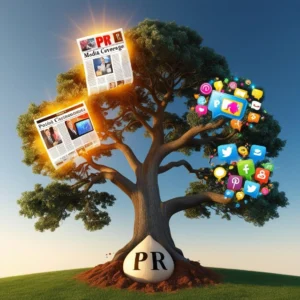
Definition of PR
Public Relations is a way to promote an individual or business to the public. The key goal is to circulate news and events about a company, build its image, and maintain a positive reputation.
Public Relations is earned media. That means publicity gained through free strategic communication instead of paid promotions. YouGov, an international body for online research data analytics, published a report that says 90 percent of customers believe earned media is a more credible source of information than paid media. You tend to trust third-party information about a brand more than what the brand tells you, right? The same logic applies to PR.
Often, PR initiatives include media coverage, such as press releases and articles. Customer testimonials, social media shares, podcast brand mentions, and crisis management also fall under the earned media category. Platforms used are newspapers, online news, and social media.
Definition of Advertising

Definition of Advertising
Are you irritated by all those obnoxious ads that pop up while binge-watching? Well, we can’t do much about them. After all, advertising is a crucial part of marketing efforts. Let me put it. Advertisements are paid messages that businesses use to capture public attention and persuade the public to become customers.
An advertisement is a paid form of marketing communication. Since it is sponsored, advertisers can control their ads from every angle. If you are an advertiser, everything—from content and design to channel selection to target specific demographics to the timing of placements and how long the ad will run—will be under your control.
Ads can be placed everywhere – from newspapers, radio, TV, Billboards to modern-day social media platforms.
Key Differences Between PR and Advertising
Now that we have a brief introduction to both PR and advertising, let’s discuss their differences in detail. When you pit Advertising vs PR, several clear contrasts emerge:
Purpose
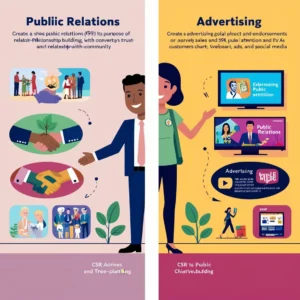
Purpose – PR Vs Advertising
The goal of advertising is to promote a company’s products and services through creative messages to attract public attention. This leads to increased sales and, in turn, increased profit.
On the other hand, the real motive behind PR is to build a positive image around a brand among the public. PR focuses on building trust between the brand and the public. In simple logic, if trust is instilled in the public, then the brand grows in sales.
You must have seen companies nowadays launch social initiatives, such as Corporate Social Responsibility (CSR). These are PR campaigns designed to showcase the company’s commitment to social causes. This improves the public perspective of the company.
PR, advertising and marketing are important for the growth of your business.
Credibility and Trust
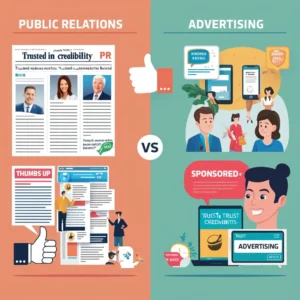
Credibility and Trust – PR Vs Advertising
The key focus of Public Relations is to build trust and enhance a brand’s acceptability in people’s minds. Hence, earned media – the alternate name of PR. Here, public confidence in a brand is earned through third-party channels such as new outlets, journalist-written articles, and influencer endorsements. PR or earned media is an unpaid strategic communication.
Conversely, advertising is paid media. Here, brand promotion is done in exchange for money. Naturally, it is less credible in the eyes of customers compared to earned media like PR.
Control Dynamics
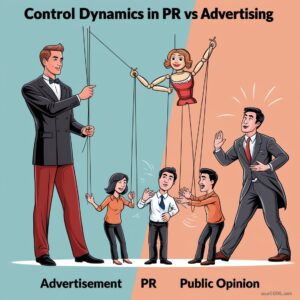
Control Dynamics – PR vs Advertising
Advertisers enjoy full control over their ads. The reason is that advertisement is a sponsored medium of communication. So business owners can keep everything in their hands—content, target audience, preferred channels, timing, duration, you name it. There is assurance of placement of these ads irrespective of whether the platform is newspapers, TV/radio, or social media.
On the contrary, PR messages are broadcast through journalists, influencers, or word of mouth, so brands have little control over this. The placement of PR messages, such as press releases and articles, is not guaranteed.
Target audience
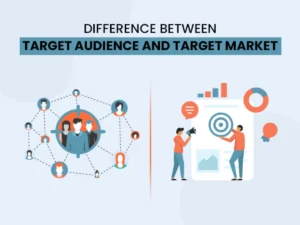
Target Audience – PR vs Advertising
PR campaigns target a broader, more diverse audience, which includes the public, other stakeholders, and the media.
In contrast, advertising is focused on increasing sales and hence targets potential consumers.
Measuring Success
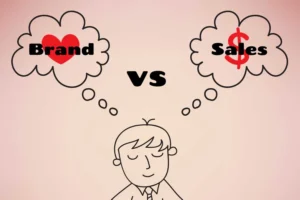
Measuring Success – PR vs Advertising
PR and advertising have distinct metrics to gauge efficacy. The higher the conversion rate and return on investment (ROI) of your ad campaign, the more effective it is. That means profit optimization is the ultimate motive here.
In PR, success is often measured by media coverage, sentiment analysis, and improved trust and credibility.
Timeframe

Timeframe – PR vs Advertising
Advertisements are placed to capture the public’s attention quickly. Thus, it can give immediate results.
However, PR’s effectiveness becomes obvious over time. You see, you can’t build brand images on short notice! Once a deep connection is built between a brand and people, PR gives dividends in terms of increased customer loyalty and advocacy.
How PR and Advertising Can Work Together
1. Building Brand Equity Through PR
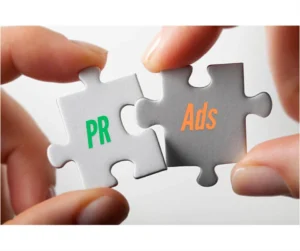
Mixing PR with Ads for Brand Equity
Every organization relies heavily on the brand value PR creates. Therefore, the right advertising tactics for a company should be to create ads that effectively convey the brand’s value and message to the public. Your ads will be more effective if you add a bit of PR. To put it simply, add PR to the advertisement, and you’ll get the expected media reach.
2. Amplifying Thought Leadership with Advertising

Ads to boost thought leadership
Thought leadership content crafted by industry insiders and subject matter experts is frequently released as part of public relations initiatives. These PR pieces can be combined with advertising to boost promotion and distribution. For example, including appealing banner advertising or infographics in a thought-provoking case study increases its chances of reaching a larger audience.
3. Balancing Immediate Impact with Lasting Relationships

Balancing short and long-term bond
The key goal of advertising is to attract instant public attention. This no doubt leads to an immediate bond between brands and the public. But this relationship should be maintained and harnessed as well. This is where PR steps in. There is no alternative to Public Relations if you want to establish and sustain a healthy and trustworthy relationship between brands and the common people.
This example fits wonderfully here. Famous beauty brand Dove launched a campaign in support of the Kids Online Safety Act (KOSA), partnering with Common Sense Media and Parents Together Action. This campaign aligned with Dove’s brand values of promoting body positivity and self-esteem, reinforcing trust among its customer base.
Key Takeaways: PR vs. Advertising
So it is quite evident that PR and advertising have distinct perspectives. While advertising focuses on drawing immediate public attention, PR seeks to develop a positive brand image and foster long-term relations. Despite differences, PR and advertising can work together to achieve bigger marketing goals. In today’s competitive business landscape, the ideal marketing strategy is to strike the right balance between PR and advertising to ensure credibility and visibility.
Explore the differences between PR and advertising. Learn how they build brand trust, boost visibility, and achieve cohesive marketing goals.

